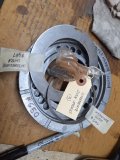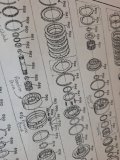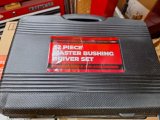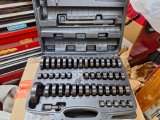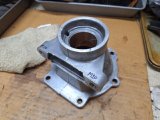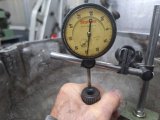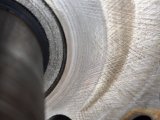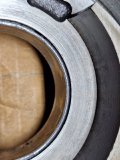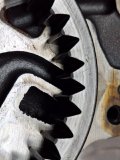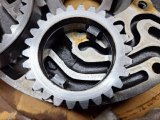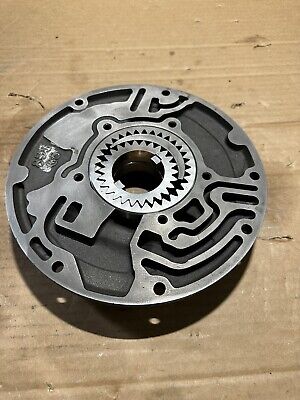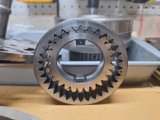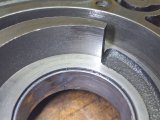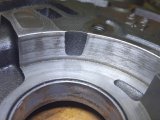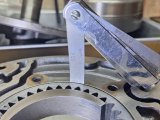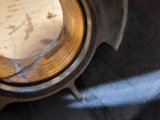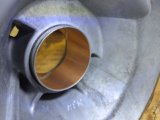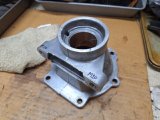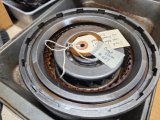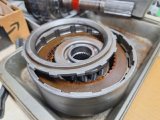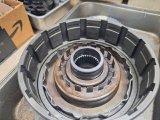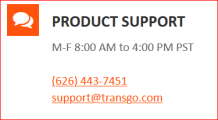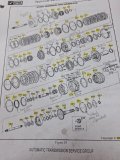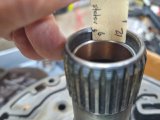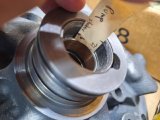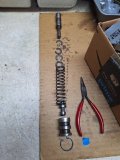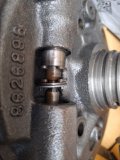As part of my overall engine/car build on my 57 Belair, I had started to post some info on my th400 rebuild. I work so slowly, especially this time of the year that I wasn't sure if posting a separate thread on the th400 rebuild would provide value, especially with the huge amount of info already online. After thinking about it some more I thought what the heck, I'll post some of the progress I make. Be aware, even though I've rebuilt th350 and 4R70W transmissions before, I'm no expert, so take this as entertainment  . Just documenting my way through this transmission.
. Just documenting my way through this transmission.
You can find the original engine thread here:
TXChevy 454 Build
Rick was kind enough to set up an engine simulation based on specific build criteria. At some point I'd like to do a chassis dyno, but conservative results were as follows, important to keep in mind for the transmission. I don't need a race-built unit, but I do want to keep the engine numbers in mind as a realistic idea of what to improve in the transmission.
Indicated Power = 487 @ 5000 rpm
Flywheel Power = 409 @ 4600 rpm
Flywheel Torque = 519 @ 3700 rpm
Baseline Info:
This th400 was a junkyard pull out of a 1984 k-series 2WD pickup, mileage unknown. Installed in the first build on this car in 1990 if I remember right. Its never been opened up before other than my installation of a basic B&M shift kit (plate) sometime after that, and a few fluid/filter changes. My guess from looking at the clutches is that the unit looks like fairly low miles. The bushings generally look decent but I'll still replace them. The highest wear I see is on the planetary drum from the reverse band. I'll replace that drum. I've not yet looked at the clutch steels, pump gears etc. so my opinion may change! As I progress I'll post more interesting things and also give a list of all upgrades.
Resources:
These are some of the main resources I'm using...
- ATSG Manual for TH400
- Youtube - T.W. McDaniel
- Youtube - Southpaw Automotive
- Youtube - Nick's Transmissions
There's a lot more out there, as you look at these, other info opens up.
There are some moderate upgrades I will also do, nothing crazy.
I made a holding fixture for this project from steel I had, thick wall, it's overdesigned but that's fine. It's worked great, so much easier to work on the unit.
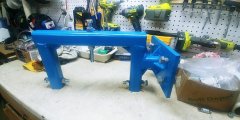
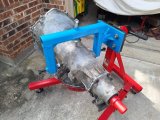
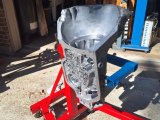
First step was to disassemble, the good part is that the transmission breaks down into units - pump, forward clucth etc. I can focus on each, clean/inspect/new parts, then assemble to check end clearances as I go.
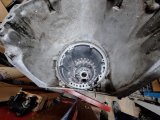
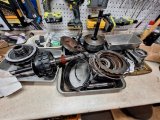
Case was thoroughly powerwashed, then I used a flat sandpaper block to simply ensure the lower faces of valve body/transmission were true and level. Didn;t go crazy, just a clean-up. The valve body will get the same treatment. After this was all done, the case was again powerwashed, more brake cleaner sprayed into passages, air gun to blow everything out thoroughly, then a wipe down inside with transmission fluid, bagged up.
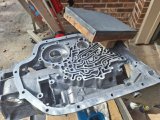
You can find the original engine thread here:
TXChevy 454 Build
Rick was kind enough to set up an engine simulation based on specific build criteria. At some point I'd like to do a chassis dyno, but conservative results were as follows, important to keep in mind for the transmission. I don't need a race-built unit, but I do want to keep the engine numbers in mind as a realistic idea of what to improve in the transmission.
Indicated Power = 487 @ 5000 rpm
Flywheel Power = 409 @ 4600 rpm
Flywheel Torque = 519 @ 3700 rpm
Baseline Info:
This th400 was a junkyard pull out of a 1984 k-series 2WD pickup, mileage unknown. Installed in the first build on this car in 1990 if I remember right. Its never been opened up before other than my installation of a basic B&M shift kit (plate) sometime after that, and a few fluid/filter changes. My guess from looking at the clutches is that the unit looks like fairly low miles. The bushings generally look decent but I'll still replace them. The highest wear I see is on the planetary drum from the reverse band. I'll replace that drum. I've not yet looked at the clutch steels, pump gears etc. so my opinion may change! As I progress I'll post more interesting things and also give a list of all upgrades.
Resources:
These are some of the main resources I'm using...
- ATSG Manual for TH400
- Youtube - T.W. McDaniel
- Youtube - Southpaw Automotive
- Youtube - Nick's Transmissions
There's a lot more out there, as you look at these, other info opens up.
There are some moderate upgrades I will also do, nothing crazy.
I made a holding fixture for this project from steel I had, thick wall, it's overdesigned but that's fine. It's worked great, so much easier to work on the unit.



First step was to disassemble, the good part is that the transmission breaks down into units - pump, forward clucth etc. I can focus on each, clean/inspect/new parts, then assemble to check end clearances as I go.


Case was thoroughly powerwashed, then I used a flat sandpaper block to simply ensure the lower faces of valve body/transmission were true and level. Didn;t go crazy, just a clean-up. The valve body will get the same treatment. After this was all done, the case was again powerwashed, more brake cleaner sprayed into passages, air gun to blow everything out thoroughly, then a wipe down inside with transmission fluid, bagged up.


